Hamadan or Hamedan is one of the oldest centers of Persian civilization. The city has been inhabited since the 2nd millennium BC. Even before the migration of the Aryans to Iran, Kassian lived in this region. But according to great historians such as Herodotus, the city of Hamedan was founded by Deioces during the Median period. At this time, the ancient city of Hegmataneh underwent fundamental changes and many fortifications were built there. In 550 BC, Cyrus the Great defeated the king of Media and established Hegmatane as his capital. during the Parthians Hegmatane served also a the summer capital.
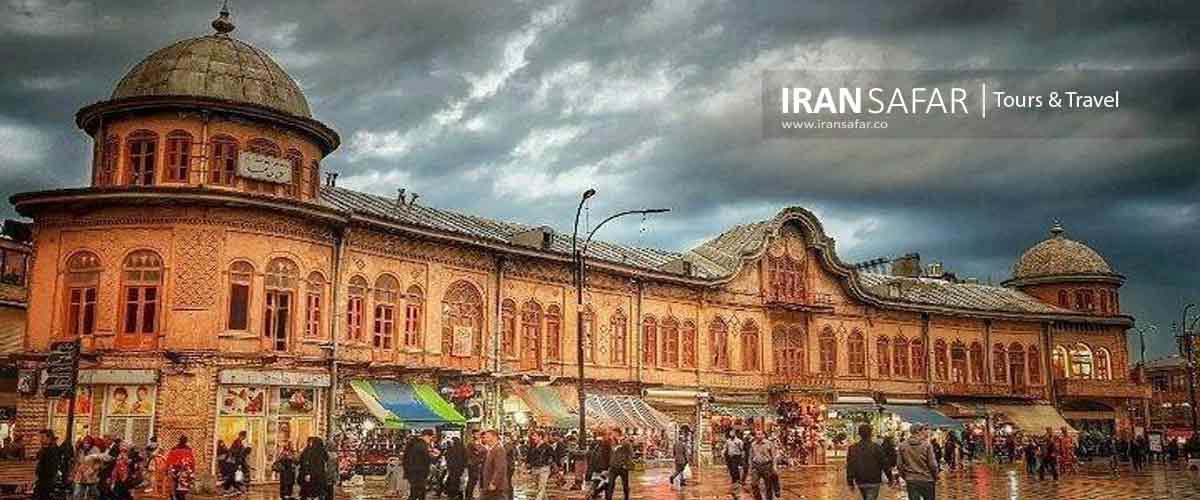 Imam khomeini square, Hamadan, Iran
Imam khomeini square, Hamadan, Iran
Top places to see in Hamadan
Hamadan has special and famous sights and tourist attractions that are suitable for a pleasant trip in spring. What are the motivations for traveling to Hamedan? Hamadan is one of the oldest cities in Iran and is the first capital of the first empire of Iran, the Medes. Hamadan is home to many poets and cultural celebrities, apart from this, dozens of sights and historical places in this city confront us with one of the most historic cities in Iran and in the world. It is also well known for handicrafts such as leather, ceramics, and carpets.
In this article, we introduce the most important sights of Hamadan.
1Alavian Dome (Gonbad-e Alavian)
The Seljuk-era square building of Alavian dome was first built as a mosque by the Alavian family. Originally the buliding included two minarets and a green dome, but it was later transformed into a family mausoleum by adding a crypt. The existence of a dome sanctuary located on the south side with beautiful decoration added to the richness of this beautiful construction.
2Hegmataneh (Ekbatana)
A site not to be missed during a stay in Hamadan, is the excavations of Hegmataneh (Ecbatana) and its museum.This ancient city was the first capital of the Aryans and, along with Athens in Greece and Rome in Italy and Susa in Khuzestan, is one of the few ancient cities in the world that still survives and is important. The Median kingdom was founded in 8th century BC by Deioces or Dia-oku and Hegmataneh was built as a Capital.
Hegmataneh is the largest archaeological site in Iran, a treasure laid bare at the end of the 20th century which allows you to discover the ancient and almost perfectly geometric city. One can admire their houses built back to back and similar to each other and perpendicular streets. In the museum dedicated to the excavations, many Achaemenid, Sassanian and Median objects are exhibited and offer a real plunge into the past, to the time when Ecbatana was still the capital of the Median kingdom and one of the most influential cities in the world.
3Ganjnameh Inscriptions
2500 years ago, during the Achaemanian empire, Hegmataneh was one of the two capitals of this imperial world. Darius I (r.522-486 BC) carved his second inscription for posterity on the rocks near the city. Then, his son Xerxes (r.486-446 CE), inscribed the same inscription mentioned with some small changes on his own name. The inscriptions are written in 3 columns of 20 lines in three languages: “ancient Persian”, “Elamite” and “Babylonian”. The ancient Persian language is found on the left side of the two tablets and is 115 cm wide; the Elamite text is written in the middle of the two inscriptions and the Babylonian text is in the third column. This magnificent monument is located 5 km southwest of the historic city of Hamadan and welcomes historians, archaeologists and nature enthusiasts at the end of the lush road from Abbas Abad to Alvand Kouh and next to the Ganjnameh waterfall.
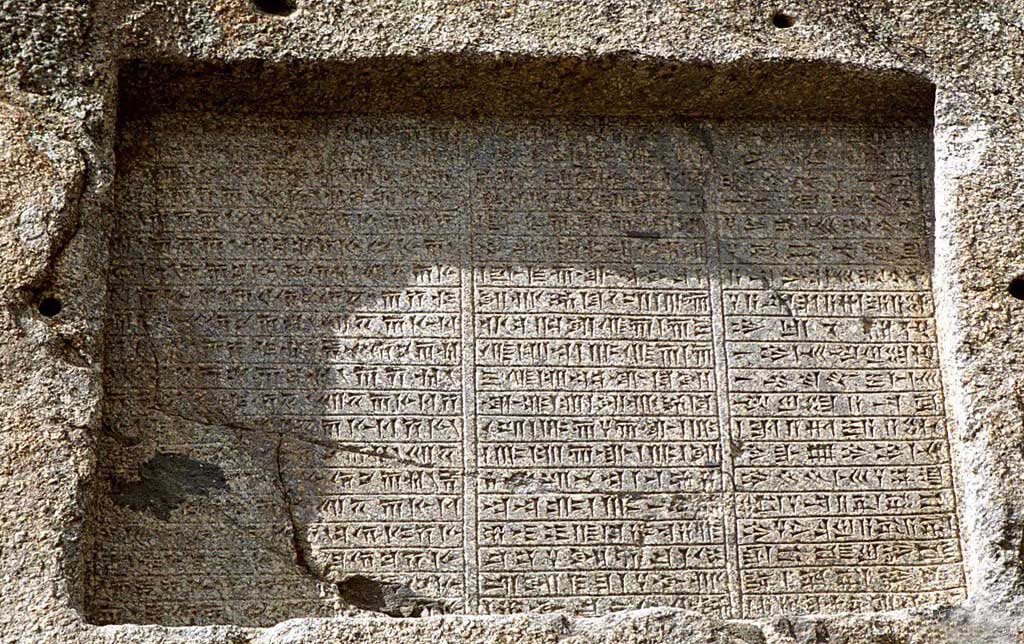 Ganjnameh Inscriptions, Hamadan, Iran
Ganjnameh Inscriptions, Hamadan, Iran
Ganjnameh Inscriptions Translation
The text of Darius:
The great God is Ahuramazda, who created this earth, who created the sky, who created the people, who created the happiness for the people, who made Darius king, king of many, rule of many. Like Darius, the Great King, the King of Kings, the King of Lands of different races, the King of Long and Long Land, the noble son of the Achaemenid
The Text of Xerxes:
There is the great God Ahuramazda, who is the greatest of the gods, who created this earth, created the sky, created the people, creating happiness for the people, made King Xerxes, the only one among the many kings, the only ruler among the countless rulers. I am Xerxes, king of kings, king of nations, king of this vast faraway land, son of Darius king of Achaemenid.
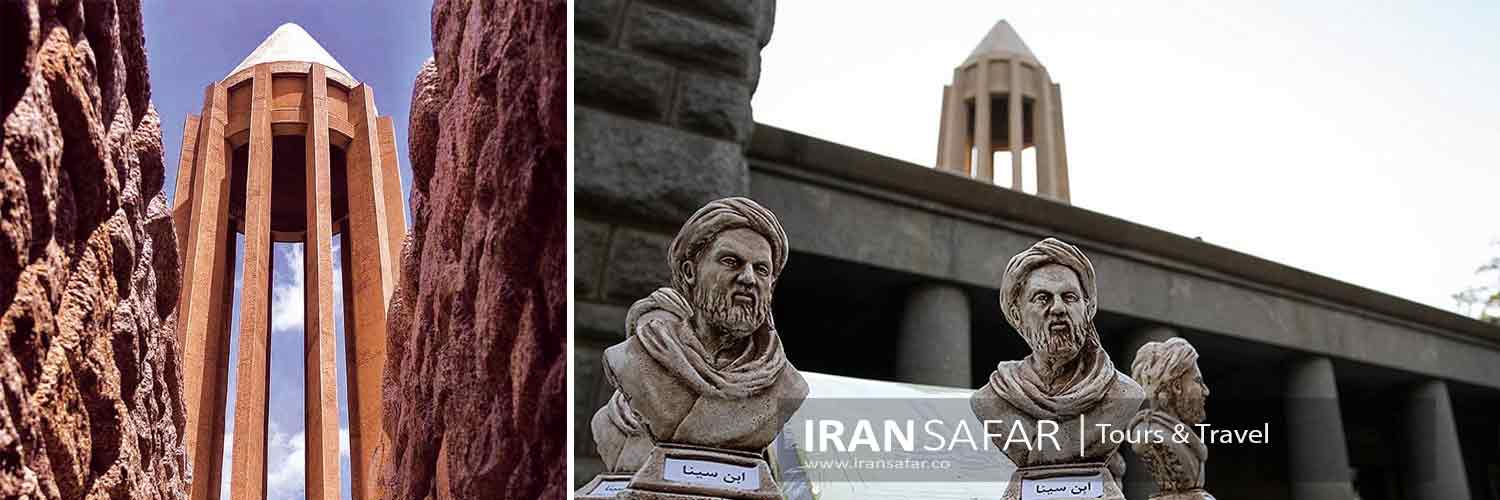 Mausoleum of Avicenna, Hamadan, Iran
Mausoleum of Avicenna, Hamadan, Iran
4Mausoleum of Avicenna
Avicenna was an 11th century Persian philosopher, physician, pharmacologist, poet, and scientist who exerted a profound impact on philosophy and medicine in Europe and the Islamic world. Abu-Ali-Sina or Ibn-e Sina, known as Avicenna in the west, among a lot of other achievements, wrote a medical encyclopedia that has been mandatory to read by every medical student in the west until the 19th century. Avicenna’s Canon of medicine, first translated from Arabic into Latin during the 12th century, was the most important medical reference book in the West until the 17th century, introducing technical medical terminology used for centuries afterwards. His other works as a poet and philosopher are still studied today.
The Mausoleum of Avicenna is a complex dedicated to this Iranian polymath, the complex includes a library, a small museum, and a spindle-shaped tower inspired from the Ziyarid-era Gonbad-e Qabus Tower. the tomb was built in 1952, replacing an older building that was demolished in 1950.
5Alisadr cave
Alisadr cave is one of the most spectacular natural sites in Iran and also in the world because of its large open rivers and its many long streams which are distributed throughout the cave. It is a unique geological phenomenon and just a few caves around the world are comparable with its splendid scenic formations. The taste of the cave water is normal as well as its color and smell and there is no sign of life there. Its temperature remains constant throughout the year (about 12 C) and the water is very translucent to the point that you can see its depth up to ten meters in natural light without any blurring. The depth of the river varies from ten meters to fourteen meters in certain parts. The cave water comes from underground water sources, from projections and progressive seepage of water from the roof and walls of the cave, which in turn are fed by regular rains.
This cave is about 75 Km away from Hamadan and took its name from a nearby village. Read More>>
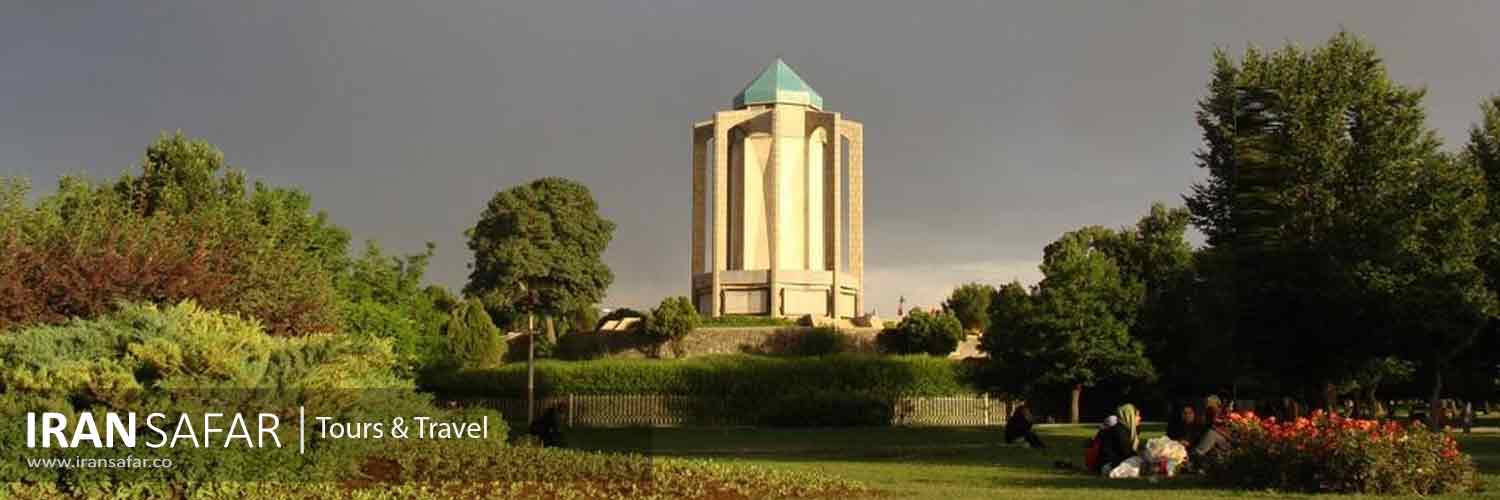
6The tomb of Baba Taher
Baba Tahir or Baba Taher Oryan Hamadani was an 11th century Persian mystic poet from Hamadan. Over the centuries, the structure of his tomb has witnessed numerous destruction and reconstructions. The old building dates back to the Saljuq dynasty (11th C), then an octagonal brick tower was built on the funeral site of Baba Tahir, which was then destroyed. During the reign of Reza Shah the first Pahlavi king, the municipality of Hamadan built a new structure instead of the old one which was mainly made of bricks. During this reconstruction, a 12th century tile was excavated and is now kept in Tehran‘s Iran Bastan Museum. On this turquoise tile, the Quranic verses are inscripted in Kufic stereoscopic calligraphy. The construction of a new structure was carried out in 1965 with the help of the National Heritage Society of Iran and the city municipality.
7Stone Lion (Shir-e Sangi)
dating back to Parthian period, Hamadan’s famous Stone lion or Shir-e-sangi is located on a historic hill in Hamadan.
This stone lion, 2.5 meters long, was found during the conquest of Hamadan by the Arabs. It may originally guarded one of the city gates, and may have been carved during the reign of Alexander the Great. Today very damaged, treasure hunters have broken it and the protrusion of its nose has been smoothed out by the kisses of women seeking a husband!
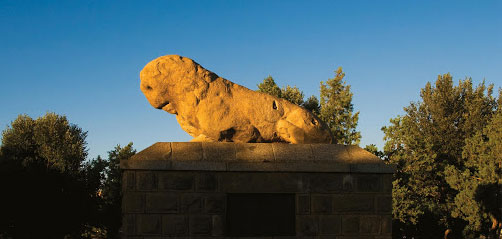
8Tomb of Esther and Mordecai
Since Achamenian empire, there has been an important Jewish community in Iran. The main synagogue in Hamadan is the shrine of Esther, the Jewish wife of King Xerxes, and her uncle Mordecai. The tomb of Esther and Mordecai is one of the most important Jewish shrines in the world and is considered the second Jewish sacred center after Jerusalem. You may be interested to know “why Esther and Mordecai are so important for Jewish?”

Hamadan’s Climate
Hamedan has a cold and mountainous climate due to its elevated altitude in the middle of Zagros Mountains. So that in some heights of this province, the air temperature reaches -30 °C. In general, the temperature of Hamadan province is about 11°C on average, which is mild and pleasant. The fair amount precipitation in Hamadan in all seasons has also made it very suitable for planting agricultural and horticultural products. The annual rainfall in Hamadan is about 317 mm.Existence of large plains in the northern regions of the province causes strong winds. So that Hamadan province is one of the windy provinces which is a suitable place for installing wind farms.
Natural Attractions of Hamadan
The geographical conditions of Hamadan have made this city have a pristine and unique nature. One of the most important natural attractions of Hamadan is Ali Sadr Cave, which we have already explained in detail. But other natural attractions include Ganjnameh waterfall, Tarik Darreh ski slopes, Ekbatan dam lake, Qara chai river, Beglijeh cave, Aq Qaya cave and Qaleh Jogh cave. Ganjnameh waterfall originates from Zagros and Alvand mountains in Hamedan. The height of this scenic waterfall reaches more than 12 meters.


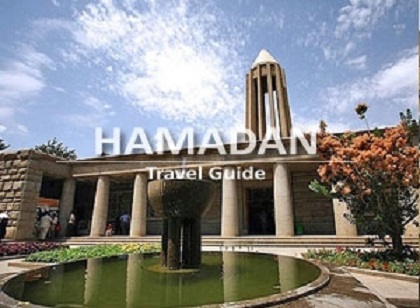
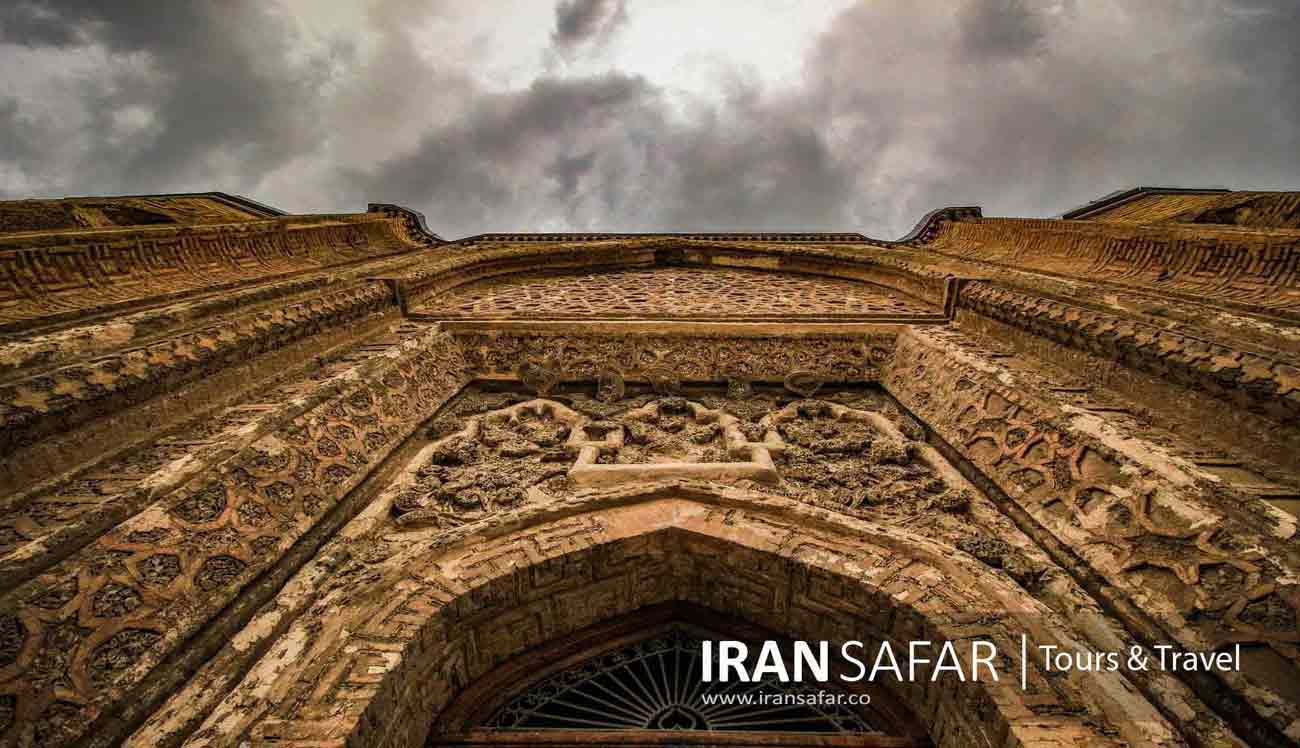
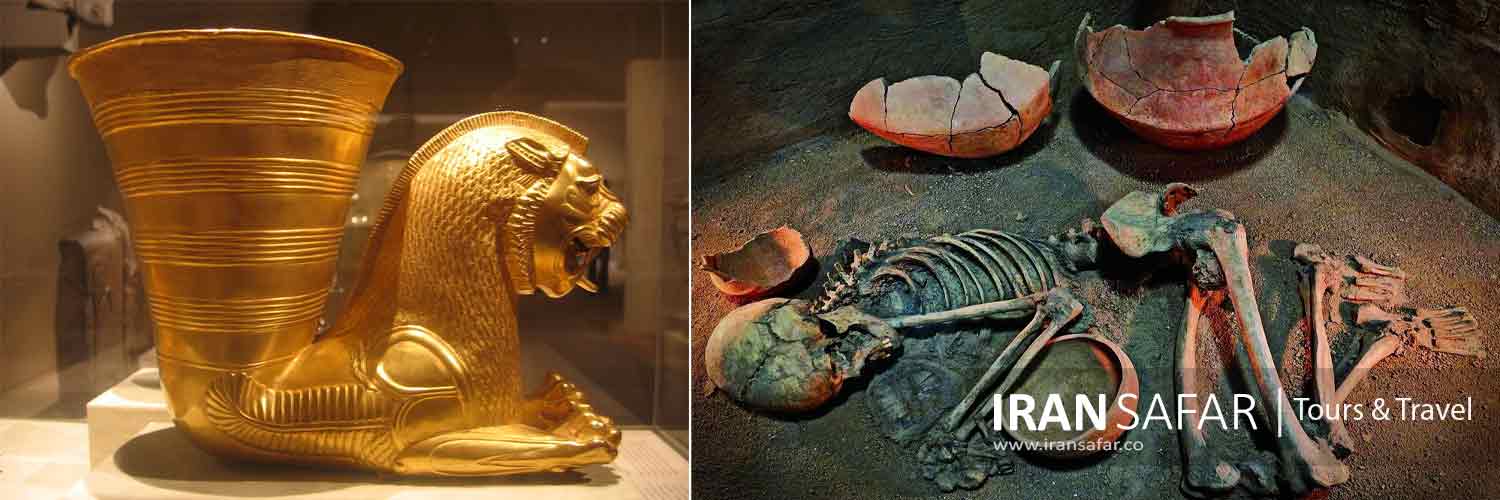
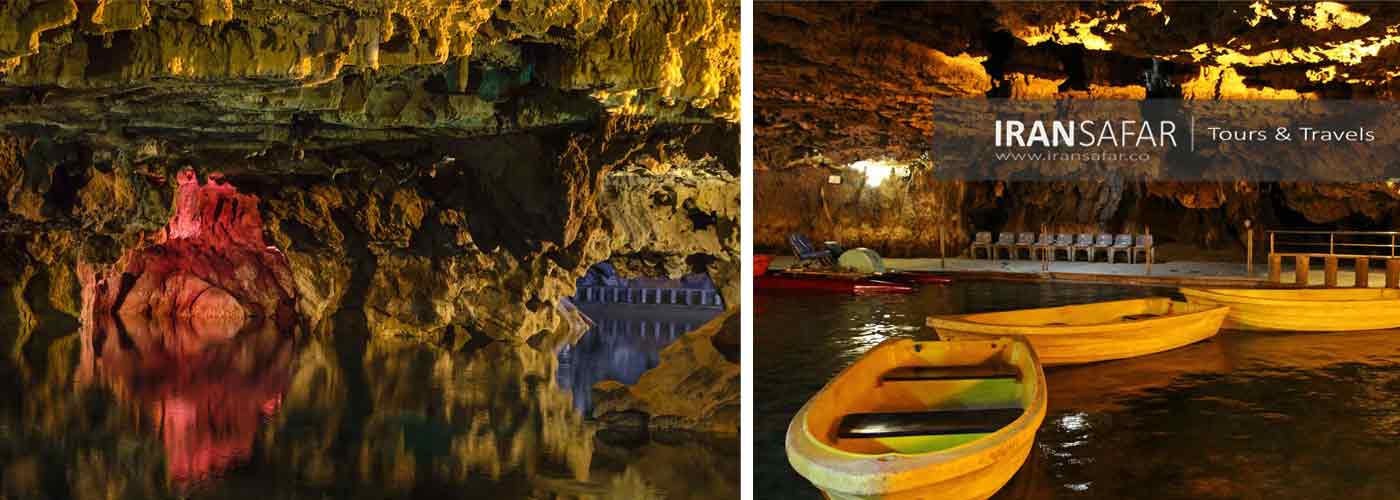

Hamedan